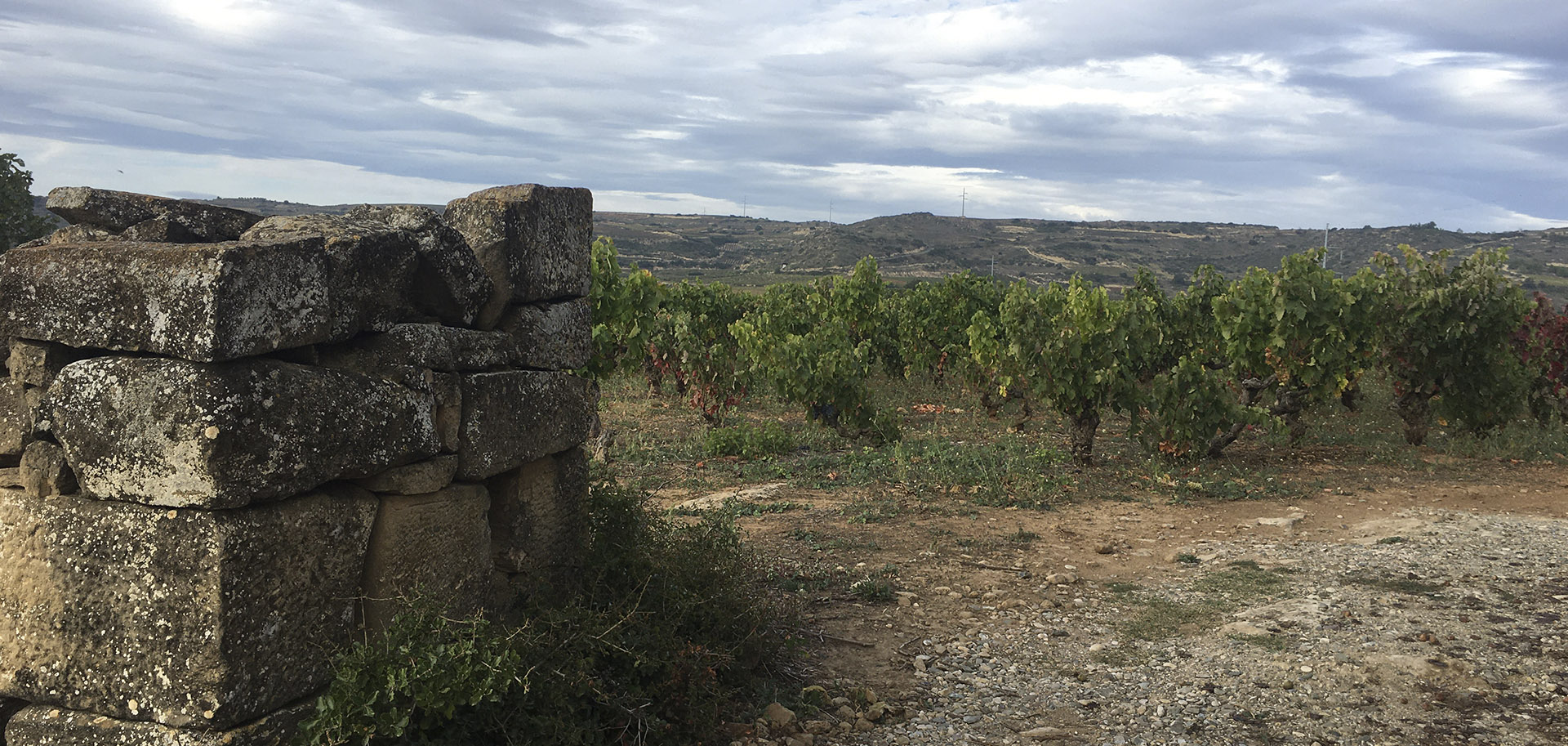A history that goes back more than a century…
In 1920. my grandfather left a record of the planting of a vineyard that today we keep among our vineyards in our estate La Llana.
100 years later, we have 20 hectares of vineyards of our own, maintaining both the vineyards inherited from my grandfather and those that my father Luis, who, in the 70s, was enlarging them with the purchase of land and adjoining vineyards. To these vineyards we added in 1999 the last vineyard that Jesús and I planted to coincide with the birth of our youngest son.
…and continues to this day
Currently our vineyards are grouped into 5 plots subdivided into a total of 52 subplots. The vineyards are located at an altitude between 450 -520 meters above sea level and are planted on soils of different compositions. From pebble and sandy soils near the Ebro, to clayey-calcareous soils with a subsoil of stratified limestone rock, and even poor soils with abundant superficial sandstone, which conditions its production. These soils are characteristic of Rioja Alavesa with different features from one to another, which will indicate the way of working the vines to obtain grapes with their own personality.
Each harvest we learn from the knowledge accumulated in its roots, carrying out sustainable agriculture, taking care of the environment, favoring the native fauna and trees that make up the ecosystem of our land.
A history that is renewed in each harvest
Every September, we go through the vineyard reading in the clusters, berries and leaves the optimal moment of ripening. Thus, the Tempranillo, Mazuelo, Graciano or Viura are harvested at the most appropriate moment during a manual and staggered harvest.
The entry of the grapes into the winery will give way to different winemaking processes until the illusion of each year is fulfilled and the new cycle for the vineyard in this area starts.
Rioja Alavesa – The environment
Rioja Alavesa is part of the natural region created between the Sierra de Cantabria and the left bank of the river Ebro with a length of 40 km and a width of approximately 15 km.
Dolmens, prehistoric sites and necropolises bear witness to very early human settlements, and historically, for many centuries, the cultivation of vines has been part of the agriculture of the region as evidenced by the many cave wine presses that are preserved to this day. This is reinforced by the fact that the Rioja Alavesa enjoys unbeatable conditions for the cultivation of vines:
- Protection from the cold north winds by the Sierra de Cantabria.
- The land slopes down from the mountains towards the valley, favoring its southern orientation with a greater incidence of sunlight, which is beneficial for the ripening of the grapes.
- The plots are on terraces with a slight slope that favors the evacuation of rainfall and avoids waterlogging.
- The composition of the soil is mostly clayey-calcareous, which acts as a quality factor.
In addition, its winegrowers are custodians of a legacy of good farming practices and defenders of their environment with the responsibility of transmitting it in the best possible conditions. It is in this region where we have our vineyards from which we learn from the knowledge accumulated in their roots, knowledge that we apply to produce our wines Jaun de Alzate and Polus.
Loli

